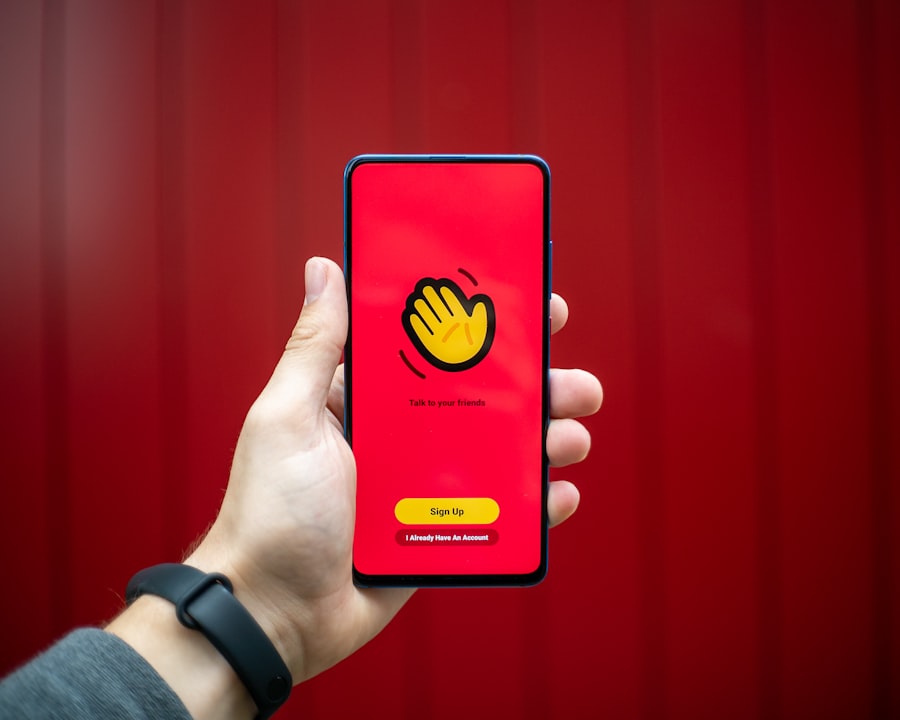In recent years, the financial landscape has evolved significantly, with technology playing a pivotal role in shaping how individuals access credit. Mini loan apps have emerged as a popular solution for those seeking quick and convenient access to small amounts of money. These applications are designed to provide users with short-term loans, typically ranging from a few hundred to a couple of thousand dollars, often with minimal documentation and rapid approval processes.
The rise of mini loan apps can be attributed to the increasing demand for immediate financial assistance, particularly among younger consumers who are accustomed to the convenience of mobile technology. Mini loan apps operate on the premise of providing quick cash solutions for unexpected expenses, such as medical bills, car repairs, or urgent travel needs. Unlike traditional banks that may require extensive paperwork and lengthy approval times, these apps streamline the borrowing process, allowing users to apply for loans directly from their smartphones.
This accessibility has made mini loans an attractive option for individuals who may not have access to conventional credit sources or who prefer the ease of digital transactions. However, while these apps offer convenience, it is essential to understand their workings and implications fully.
Key Takeaways
- Mini loan apps provide quick and convenient access to small amounts of money for short-term needs.
- To apply for a mini loan, users typically need to download the app, create an account, and submit personal and financial information for approval.
- Using a mini loan app can provide benefits such as fast approval, minimal documentation, and flexible repayment options.
- Eligibility criteria for mini loans may include age, income, credit score, and residency requirements.
- Repayment options for mini loans may include automatic deductions, flexible repayment schedules, and early repayment incentives.
How to Apply for a Mini Loan
Applying for a mini loan through an app is typically a straightforward process designed to minimize barriers for users. Most mini loan apps require users to download the application from their respective app stores and create an account. This usually involves providing basic personal information such as name, address, date of birth, and social security number.
Some apps may also request additional details like employment status and income level to assess the applicant’s creditworthiness. Once the account is set up, users can navigate through the app to select the desired loan amount and repayment terms. The application process often includes a quick eligibility check that may involve a soft credit inquiry, which does not impact the applicant’s credit score.
After submitting the application, users can expect a response within minutes or hours, depending on the app’s processing capabilities. If approved, funds are typically disbursed directly into the applicant’s bank account, often within the same day. This rapid turnaround time is one of the key selling points of mini loan apps, catering to those in urgent need of financial assistance.
Benefits of Using a Mini Loan App

The primary advantage of using a mini loan app is the speed and convenience it offers. In an age where time is often of the essence, having access to funds at the touch of a button can be invaluable. Users can apply for loans anytime and anywhere, eliminating the need for in-person visits to banks or financial institutions.
This flexibility is particularly beneficial for individuals with busy schedules or those living in remote areas where traditional banking services may be limited. Another significant benefit is the reduced documentation required compared to traditional lending methods. Many mini loan apps do not require extensive paperwork or collateral, making them accessible to a broader audience, including those with less-than-perfect credit histories.
This inclusivity allows individuals who may have been denied loans by conventional lenders to secure funding when they need it most. Additionally, many apps provide transparent information regarding fees and interest rates upfront, enabling users to make informed decisions about their borrowing options.
Eligibility Criteria for Mini Loans
| Criteria | Minimum Requirement |
|---|---|
| Age | 18 years old |
| Income | Minimum monthly income |
| Credit Score | Minimum credit score |
| Employment | Stable employment |
| Residency | Proof of residency |
While mini loan apps are designed to be accessible, they still have specific eligibility criteria that applicants must meet. Generally, most apps require users to be at least 18 years old and a resident of the country where the app operates. Additionally, applicants must possess a valid bank account into which the loan funds can be deposited.
Some apps may also require users to provide proof of income or employment status to ensure they have the means to repay the loan. Credit history can also play a role in eligibility, although many mini loan apps cater to individuals with varying credit profiles. Some platforms may perform a soft credit check that allows them to assess risk without affecting the applicant’s credit score.
However, others might have stricter requirements and may deny applications based on poor credit history. It is essential for potential borrowers to review each app’s specific criteria before applying to increase their chances of approval.
Repayment Options for Mini Loans
Repayment options for mini loans vary significantly among different apps, reflecting their diverse business models and target audiences. Most mini loan apps offer flexible repayment terms that can range from a few weeks to several months, allowing borrowers to choose a plan that aligns with their financial situation. Users typically repay their loans through automatic deductions from their bank accounts on scheduled dates, which helps ensure timely payments and reduces the risk of late fees.
Some apps also provide options for early repayment without penalties, enabling borrowers to pay off their loans sooner if they have the means to do so. This feature can be particularly advantageous for those looking to minimize interest costs associated with their loans. However, it is crucial for borrowers to carefully review the repayment terms outlined in their loan agreements, as some apps may impose high-interest rates or fees that could lead to financial strain if not managed properly.
Risks and Considerations of Using Mini Loan Apps

Despite their convenience, mini loan apps come with inherent risks that borrowers should consider before proceeding with an application. One of the most significant concerns is the potential for high-interest rates and fees associated with these loans. Many mini loans are classified as short-term loans, which often carry higher interest rates than traditional bank loans or credit cards.
Borrowers who do not fully understand these costs may find themselves in a cycle of debt if they are unable to repay their loans on time. Additionally, some mini loan apps may employ aggressive collection practices if borrowers default on their loans. This can lead to negative impacts on credit scores and financial stability.
It is essential for users to read reviews and conduct thorough research on any app they consider using to ensure they are dealing with reputable lenders who adhere to fair lending practices. Understanding the terms and conditions associated with each loan is crucial in mitigating risks and making informed borrowing decisions.
Comparing Different Mini Loan Apps
With numerous mini loan apps available in the market, comparing different options is vital for finding the best fit for individual needs. Factors such as interest rates, repayment terms, customer service quality, and user experience should all be taken into account when evaluating various platforms. Some apps may offer lower interest rates but have stricter eligibility criteria or less favorable repayment terms, while others might provide more flexible options at a higher cost.
User reviews and ratings can also provide valuable insights into an app’s reliability and customer satisfaction levels. Prospective borrowers should look for platforms that have positive feedback regarding their application processes, transparency in fees, and responsiveness in customer service. Additionally, some apps may offer unique features such as budgeting tools or financial education resources that can enhance the overall borrowing experience and help users manage their finances more effectively.
Tips for Using Mini Loan Apps Responsibly
To ensure a positive experience when using mini loan apps, borrowers should adopt responsible borrowing practices. First and foremost, it is crucial to assess personal financial situations before applying for a loan. Understanding one’s income, expenses, and existing debts can help determine whether taking on additional debt is feasible without jeopardizing financial stability.
Setting a budget for repayment is another essential step in responsible borrowing. Borrowers should calculate how much they can afford to pay back each month without compromising their ability to meet other financial obligations. Additionally, it is advisable to read all terms and conditions carefully before accepting any loan offer.
This includes understanding interest rates, fees, and repayment schedules to avoid any surprises down the line. Lastly, borrowers should consider using mini loans as a last resort rather than a first option for financial assistance. Exploring alternative solutions such as personal savings or community resources can often provide more sustainable outcomes without incurring debt.
By approaching mini loans with caution and awareness, individuals can leverage these tools effectively while minimizing potential pitfalls associated with short-term borrowing.
FAQs
What is a mini loan app?
A mini loan app is a mobile application that allows users to apply for and receive small, short-term loans directly from their smartphones. These loans are typically for amounts ranging from $100 to $1000 and are designed to be repaid within a short period of time, often within a few weeks.
How does a mini loan app work?
Users can download the mini loan app from the app store, create an account, and then apply for a loan by providing personal and financial information. The app uses this information to assess the user’s creditworthiness and determine the loan amount and terms. Once approved, the funds are typically deposited directly into the user’s bank account.
What are the benefits of using a mini loan app?
Mini loan apps offer convenience, speed, and accessibility. Users can apply for a loan anytime, anywhere, without having to visit a physical bank or lender. The application process is often quick and straightforward, and funds can be disbursed within a matter of hours.
What are the potential drawbacks of using a mini loan app?
Mini loan apps often charge higher interest rates and fees compared to traditional loans, making them an expensive form of borrowing. Additionally, users should be cautious about providing sensitive personal and financial information to ensure the security and privacy of their data.
Who can use a mini loan app?
Most mini loan apps have eligibility criteria that include being of legal age, having a steady source of income, and a valid bank account. Some apps may also consider the user’s credit history and employment status when evaluating loan applications.








